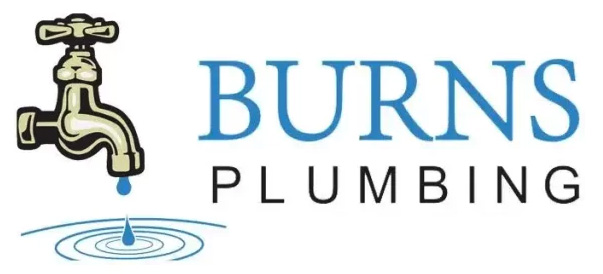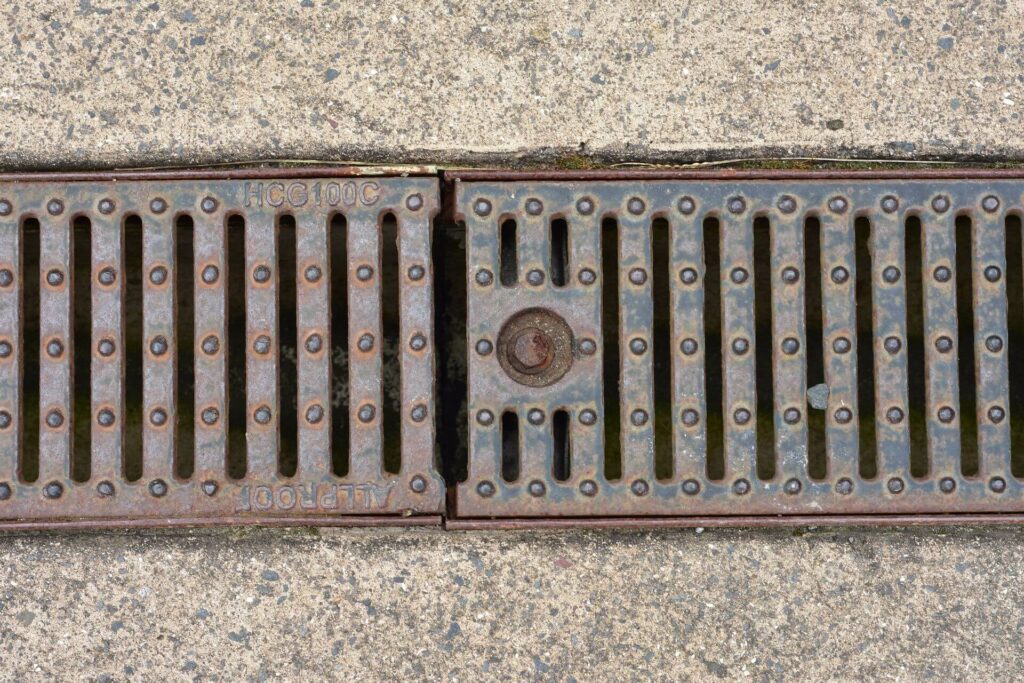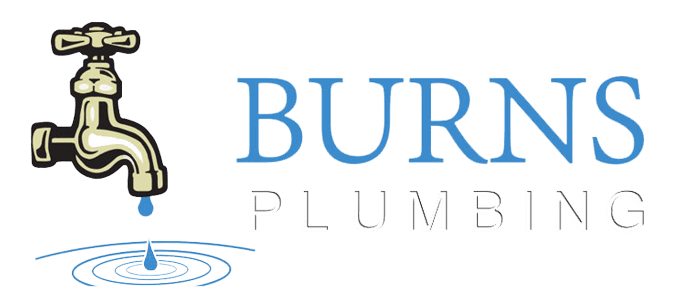Unblocking a stormwater drain is crucial to preventing water damage and ensuring efficient water flow away from your property. When rainwater can’t pass through due to a blockage in the stormwater system, it can lead to water pooling and potential flooding.
Whether it’s a clogged drain caused by debris or a more complex blockage in the stormwater pipe, understanding how to clear away these obstructions is essential. From manual removal to employing a drain snake or even high-pressure water, various methods can unblock a stormwater drain effectively. For stubborn or complex blockages, professional drain cleaning services by a plumber like Burns Plumbing may be necessary to restore proper drainage.
Identifying Signs of a Blocked Stormwater Drain
Recognising the early indicators of a blocked stormwater drain is key to mitigating potential damage and ensuring efficient water flow away from your property. Here’s a more detailed look at the signs:
- Water Pooling: The presence of water pooling around the stormwater drain, particularly after rainfall, is a clear indicator of a blockage within the system. This accumulation not only suggests an immediate blockage but also poses risks of water damage to surrounding areas.
- Slow Drainage: A noticeable reduction in the speed at which water drains indicates a partial or complete obstruction. This slow drainage can lead to increased pressure within the stormwater system, exacerbating existing blockages or causing new ones.
- Gurgling Sounds: Odd gurgling or bubbling noises emanating from the drain are telltale signs of trapped air within the system, which is usually caused by a blockage disrupting normal water flow. These sounds can sometimes be heard even when it’s not raining, indicating that the blockage is affecting the system’s ability to drain residual water.
- Unpleasant Odors: The accumulation of stagnant water and organic matter, such as leaves and twigs, can decompose, leading to foul odours emanating from the stormwater drain. These smells are not only unpleasant but also indicate health hazards due to the growth of bacteria and other pathogens.
Identifying these signs early and accurately can prevent more serious issues like water damage and inefficient drainage of rainwater from your property.
Common Causes of Blocked Stormwater Drain or Pipe
A deeper understanding of what leads to blockages in stormwater systems can aid in prevention and efficient resolution:
- Leaves and Debris: Especially during autumn, leaves, twigs, and garden debris can accumulate rapidly. When these materials enter the stormwater drain, they can form a physical barrier, obstructing the flow of water and leading to blockages.
- Blocked Gutter: Gutters are the first line of defence in a stormwater system, directing water away from the property and into the drainage system. A gutter clogged with leaves and debris can overflow, sending an excessive amount of water and solids into the stormwater drain, overwhelming it and causing blockages.
- Silt and Dirt Accumulation: Over time, the natural flow of stormwater can carry silt and dirt into the drainage system. This fine material can settle and accumulate within the stormwater pipe, gradually restricting water flow and eventually leading to a blockage.
- Damaged Pipes: Any physical damage to the stormwater pipe, such as cracks, breaks, or collapses, can allow external materials like soil and roots to enter the system. These intrusions not only cause blockages themselves but also weaken the structural integrity of the drainage system, leading to further complications.
DIY Methods to Unblock a Stormwater Drain
Using a Plunger for Minor Clogs
To use a plunger for minor clogs in your stormwater drain, start by ensuring there’s a good seal around the drain opening. Press the plunger firmly down, then vigorously pump it up and down several times to generate enough suction to dislodge the blockage. After several pumps, quickly pull the plunger away to create additional pressure changes that can help break the clog free. Finish by running water down the drain to ensure the blockage is completely cleared and water flow is restored.
Flushing the Drain with Water
When flushing the drain with water, connect a garden hose to a tap and if available, attach a nozzle to increase the water pressure. Direct the hose into the stormwater drain and turn on the water to its highest setting. The force of the water can help break up and push through blockages, especially those composed of loose debris like leaves or silt. Continue this process until water flows freely through the drain, indicating the blockage has been effectively removed.
Manually Removing Debris
For manually removing debris, first, remove the grate or cover from the stormwater drain. Using gloves, reach into the drain and begin to pull out debris such as leaves, twigs, and any other material causing the blockage. It may be helpful to use a tool like a small hand rake or a wire coat hanger bent into a hook to reach further into the drain and clear away blockages. Once you’ve removed as much debris as possible, run water through the drain to check for improved drainage.
Creating a Vinegar and Baking Soda Solution
Creating a vinegar and baking soda solution involves pouring a cup of baking soda directly into the drain, followed by a cup of white vinegar. This mixture will start to fizz and bubble, a reaction that helps to break down the gunk and grime causing the blockage. Allow the solution to sit and work its magic for about an hour, then flush the drain with a kettle of boiling water. The boiling water helps to rinse away the loosened debris, leaving your stormwater drain clear.
Employing a Drain Snake or Auger
Employing a drain snake or auger for stormwater drain clogs starts with inserting the end of the snake into the drain until you feel resistance. Crank the handle of the snake to extend the coil into the pipe, twisting it to either catch the debris or break it apart. You may need to adjust your technique, pushing and pulling slightly as you crank to fully engage the blockage. Once you think you’ve cleared the clog, slowly retract the snake, being prepared to remove any debris caught on the end. Finish by flushing the drain with water to ensure it’s fully cleared.
Utilising a Wet/Dry Vacuum
Utilising a wet/dry vacuum to clear a blocked stormwater drain involves setting the vacuum to its wet setting and attaching the hose securely over or as close to the drain opening as possible. Create a tight seal around the hose with a cloth or your hands to maximise suction. Turn on the vacuum and let it work to suck out the blockage from the drain. You may need to adjust the hose position and repeat the process several times to fully clear the drain. Once completed, test the drain with water to ensure the blockage has been effectively removed.
Advanced Techniques for Clearing Blocked Stormwater Pipes
Hydro Jetting for Severe Blockages
Hydro jetting is an effective way to unblock just about anything obstructing your stormwater drains and pipes. This method uses high-pressure water to clear away severe blockages, including tree roots, hardened sediment, and accumulated debris. The force of the water isn’t just powerful enough to dislodge the blockage but also cleans the interior walls of the pipe, preventing future clogs. Before hydro jetting, it’s often necessary to use a drain camera to inspect the stormwater drain pipe and identify the exact location and nature of the blockage. This ensures the hydro jetting process is targeted and efficient, providing a clear path for water to flow and escape, thus restoring proper drainage.
CCTV Drain Inspections
CCTV drain inspections are crucial when dealing with a blocked stormwater drainage system, especially when the cause of blocked stormwater isn’t immediately apparent. A drain camera is inserted into the stormwater drain or pipe, allowing professionals to visually inspect the interior of the pipes. This can reveal common causes of blocked stormwater, such as blocked gutters causing water to overflow, or debris blocking the drain. The detailed view provided by CCTV inspections can pinpoint blockages, cracks, or any structural issues within the stormwater drains and pipes, guiding the most effective clearing strategy.
Preventing Blocked Stormwater Pipes
Regular Maintenance Checks
Preventing blocked stormwater pipes involves conducting regular maintenance checks to ensure all components of the stormwater system are functioning correctly. This includes inspecting stormwater drainage pits and the surrounding area for rainwater that sits around, which could indicate slow water drainage. Regular checks help identify early signs of a blocked stormwater drain, allowing for timely interventions before the issue escalates.
Managing Yard Debris
A common cause of blocked stormwater drains is debris, such as leaves, twigs, and dirt, entering the drain. To prevent blocked stormwater pipes, it’s crucial to keep your yard, gutters, and stormwater drainage pits clear of debris. Ensuring that yard waste is managed and disposed of properly can significantly reduce the risk of blockage in your stormwater system, allowing water to escape freely and preventing the need to clear blocked drains frequently.
When to Call a Professional Plumber to Clear a Blocked Stormwater Drainage System
When tackling a blocked stormwater drainage system, sometimes DIY efforts and preventive measures just aren’t enough. Here are signs indicating it’s time to call a professional plumber:
- Persistent Blockages: If repeated attempts to clear the blockage using methods like hydro jetting or a drain auger haven’t been successful, professional help is needed.
- Slow Water Drainage Continues: Despite clearing debris and checking for obvious obstructions, if water isn’t escaping as it should, there could be deeper issues within the stormwater system.
- Signs of Water Damage: Water pooling around your property or signs of erosion indicate that the blocked stormwater drainage system might be causing water to divert in ways that can damage your property.
- Unidentifiable Cause: When the cause of the blockage in your stormwater drain isn’t clear, even after inspections with a drain camera, a plumber can provide a thorough diagnosis.
- Complex Blockages: Certain blockages, especially those caused by tree roots or a collapsed pipe, require professional tools and expertise to resolve.
If you’re dealing with a blocked stormwater drainage system and need expert assistance, don’t hesitate to contact Burns Plumbing. Our team is equipped to handle even the most challenging blockages, ensuring your stormwater system functions efficiently. Call us today at (02) 9072 1165 for professional drain cleaning services and peace of mind knowing your stormwater drainage is in expert hands.


